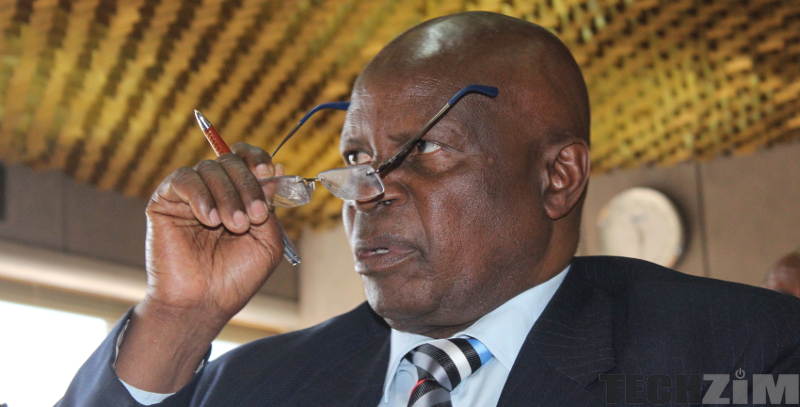Shamlessly copied and pasted from Pindula… with permission of course!
Like most Zimbabweans, or at least the ones that I interact with, I was quite surprised when President Robert Mugabe announced the creation of an entire ministry to regulate social media: the new Ministry of Cyber Security, Threat Detection and Mitigation.
Patrick Chinamasa was moved from the Finance Ministry to head the new ministry. I thought do we really need this? A standalone ministry of cybersecurity when we already have a ministry of Information, Communication and Technology and Courier Services. Within a few minutes of the formal announcement of the new ministry, Zimbos being Zimbos, started making memes that made fun of the government in general and of course with most singling out Chinamasa.
In statements made after the appointment, the government made it clear that the new ministry was about curbing dissent online with the government’s role models being China, North Korea and Russia. Okay, they did not explicitly say North Korea, they just said Korea. However, it seems clear which Korea was being referred to.
Many also questioned the ability and capability of the government’s representative the luckless new Minister to implement any meaningful measures to get the job done and curb what the government has termed “social media abuse”. My initial thought was that the new cybersecurity minister would simply subcontract the Chinese in keeping with the look east policy, to build a great firewall around Zimbabwean cyberspace. Alternatively, he could get the North Koreans or the Russians to do the job.
However, someone whom I greatly respect and admire; and who is clearly more read than I am told me of another country which had created a cyber-security division with devastating consequences, Iran. What the leaders of Iran did to solve their own problems with social media can easily be duplicated here and it is not as far-fetched as one may think at first. It is also a valuable lesson on why people should be more careful about the personal details they share online.
So in 2009, the young people of Iran got fed up, decided enough is enough and took to the streets of Tehran to demonstrate against the outcome of what they clearly felt was a flawed electoral process, which had resulted in sitting president Mahmoud Ahmadinejad being declared the winner.
Unsurprisingly, the western media was excited by this and quickly coined the phrases “The Green Revolution Movement” and “Persian Awakening” to describe it. The Iranian youthiez young people utilized the power of Twitter to share images of their fight against ruthless government thugs who responded in a heavy-handed manner, not unlike some police forces these parts of the world. Western leaders also got excited about this to the extent that the US State Department asked Twitter to postpone its scheduled network upgrade that would have briefly put the service offline so as not to disturb the revolution.
Eventually, the protests died down after at least 27 deaths in Tehran. CNN and other news organizations reported figures as high as 150, although these are unconfirmed. The Iranian authorities decided to go after the architects and the foot soldiers of the protests, which had embarrassed and exposed the government. They implemented the following measures:
The government formed a 12-member cybercrime team to scour the internet and find any false information on Iranian websites. The cyber team also took note of all the insults and lies about the government on Iranian websites. Those who were found spreading false information or insulting the government were arrested. The Iranian police also scoured the internet and collected all the images and videos of the protests that they could. The cops then asked members of the public to help them in identifying the faces of protestors. There is a reason why the word snitch and its many variants exist in every language. Many were arrested because of this. In December of 2009, a pro-government website published almost a hundred photos, which had over 150 faces circled so that members of the public could identify them. According to the police, at least 40 people were arrested because of tip-offs from the public.
The police did not stop there. They also combed through Facebook profiles searching for personal details of Iranians living abroad. These foreign-based Iranians received threatening messages warning them not to support the Green Revolution Movement as this would result in their relatives who were back home suffering. As if that was not enough, passport control offices at Tehran Imam Khomeini International Airport, checked if Iranians living abroad had Facebook accounts or if they had “suspicious online friends.”
Please make no mistake; I am not saying this is what is going to happen. I am just saying as Zimbabweans we could learn a thing or two from the Iran experience. The person I spoke of before who made me take a second look at the Cyber Security Ministry said:
My fear is some of us are sleeping on this #CyberSecurityMinistry and its broader implications.
You can read Evgeny Morozov’s The Net Delusion for more information on the Iranian Green Revolution and its aftermath.














Comments
2 responses
Honesty speaking I think we’re losing focus, why people choose to idolize certain people is really none of your business, I come here for tech and not all this tomfoolery, not to be taught morals thank you
This is tech magazine .why? your article is politically motivated?